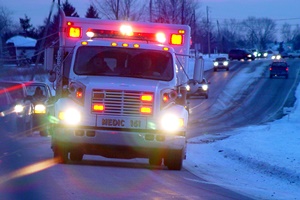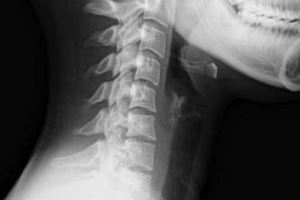Auto Accidents Can Spell Trouble at Any Speed
 When we hear the words “car accident,” many of us probably think about dramatic multi-vehicle, highway-speed collisions that involve lots of victims and first responders—firefighters, police officers, EMTs and perhaps even helicopter pilots. These are the types of automobile-related accidents that can snarl traffic for miles and make the evening news. However, these are NOT necessarily the types of accidents that cause the largest numbers of injuries. To understand these, you’d have to look at the other end of the spectrum—high-frequency, low-intensity accidents. Here’s what we’re talking about:
When we hear the words “car accident,” many of us probably think about dramatic multi-vehicle, highway-speed collisions that involve lots of victims and first responders—firefighters, police officers, EMTs and perhaps even helicopter pilots. These are the types of automobile-related accidents that can snarl traffic for miles and make the evening news. However, these are NOT necessarily the types of accidents that cause the largest numbers of injuries. To understand these, you’d have to look at the other end of the spectrum—high-frequency, low-intensity accidents. Here’s what we’re talking about:
Stationary or Parked Car Accidents. Perhaps the most frequent injury involving automobiles comes from closing the door. Nearly 150,000 times a year, someone is injured in this fashion, and the car isn’t even moving. This includes doors closing on fingers. Another 10,000 are injured while using a jack and 74,000 are injured by a car or car part falling on them.
Vehicle-on-Pedestrian or Vehicle-on-Bicyclist Accidents. Roughly one-third of auto-related injuries occur due to an automobile striking someone, particularly pedestrians and bicyclists. The damage can include anything from simple scrapes and bruises to multiple broken bones or internal injuries.
Non-Traffic Crashes and Non-Crash Incidents. A Forbes magazine article noted that researchers from the US Department of Transportation “estimated an annual total of 1,747 fatalities and 841,000 injuries due to non-traffic crashes and non-crash incidents.” These included back-overs and single-car collisions that don’t happen on a highway.
Perhaps one of the most important things to understand about auto accidents is that you don’t need to be traveling fast to be hurt. In fact, even low-speed accidents can cause musculoskeletal injuries. This is especially true in cases where the vehicle’s body doesn’t flex or crumple to absorb the energy of the impact and that energy is instead transmitted to the occupants inside. And—while modern safety equipment certainly helps prevent many serious or fatal injuries—minor to moderate injuries are still very, very common.
It’s all about physics. During a collision, the driver and passengers can be thrown about within the vehicle, potentially causing significant injuries from rapid acceleration and deceleration as well as impacts. Head, neck and back injuries are among the most common. However, low-speed accidents can be particularly problematic because victims often don’t immediately recognize that they’ve been hurt. After these sorts of collisions, many simply walk away from the event without going to a qualified healthcare provider for a prompt medical evaluation. And since it is very common for symptoms to appear days, weeks or even months afterward, diagnosis and treatment of musculoskeletal injuries can be significantly delayed, potentially complicating—and lengthening—the recovery process.
Have you or someone you care about been involved in an auto accident? If so, your chiropractic physician is specially trained to recognize the kinds of spinal and soft tissue injuries associated with automobile accidents of all types. Based on a careful assessment, he or she can design a treatment plan to help you recover as quickly and completely as possible. As experts in diagnosing and treating injuries that affect the musculoskeletal and nervous systems, chiropractors can offer a broad range of treatment options to relieve pain and restore function. These include chiropractic manipulation and mobilization, traction, massage, low-level laser and hot and cold pack therapies as well as structured exercise and stretching programs.
Auto accidents can be challenging for victims in many different ways—physically, emotionally and financially. The goal of our clinic is to accelerate the body’s healing process so that you can return to a productive, active lifestyle. We’re here to help—call or visit our office to learn more.
 America’s roads have become far safer across the past three decades. By just about any measure, travelers are much less likely to be injured or killed in a motor vehicle accident than they were in the late 1980s and early 1990s. And this is true even though we’re driving more miles each year!
America’s roads have become far safer across the past three decades. By just about any measure, travelers are much less likely to be injured or killed in a motor vehicle accident than they were in the late 1980s and early 1990s. And this is true even though we’re driving more miles each year!
